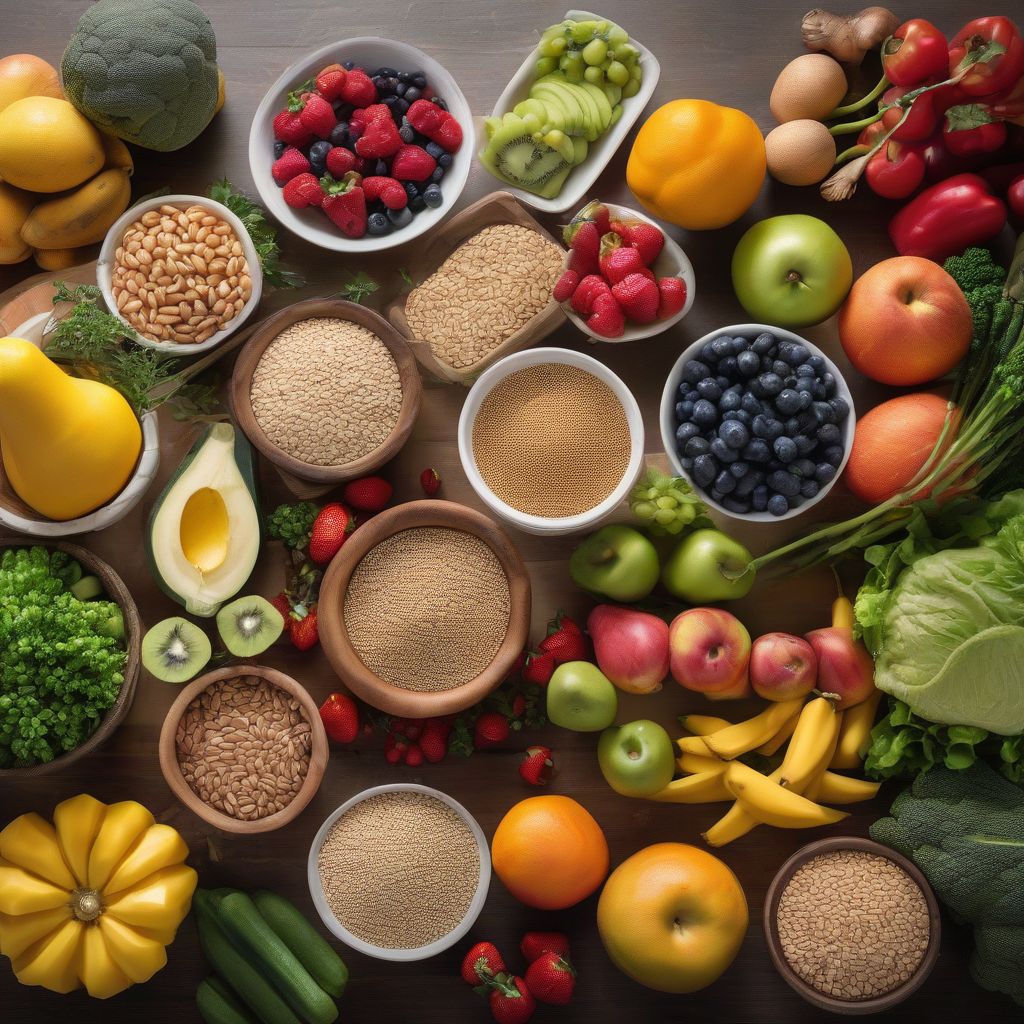“Give a man a fish and you feed him for a day. Teach a man to fish and you feed him for a lifetime.” This age-old proverb rings especially true when it comes to our children and their nutrition. As parents, we strive to provide the best for our little ones, and it all begins with nourishing their growing bodies with a balanced diet. But with so much conflicting information out there, navigating the world of children’s nutrition can feel overwhelming.
That’s where this comprehensive guide comes in. We’ll break down the essentials of a balanced diet for kids, empowering you with the knowledge and tools to make healthy choices for your family. From understanding the key nutrients kids need to practical tips for meal planning and dealing with picky eaters, consider this your one-stop resource for raising happy, healthy eaters.
Why is a Balanced Diet Crucial for Kids?
Just like a car needs the right fuel to run smoothly, children’s bodies require a variety of nutrients to grow, develop, and thrive. A balanced diet lays the foundation for:
- Optimal Growth & Development: Childhood is a time of rapid physical growth and development. Adequate protein, calcium, iron, and other essential nutrients are crucial for building strong bones, muscles, and a healthy brain.
- Strong Immune System: A robust immune system is essential for warding off illnesses. Nutrients like vitamins A, C, D, and zinc play vital roles in boosting immunity and keeping kids healthy.
- Improved Energy Levels: Providing kids with the right balance of carbohydrates, fats, and proteins ensures they have sustained energy throughout the day for school, play, and all their adventures.
- Healthy Weight Management: Childhood obesity is a growing concern. Instilling healthy eating habits early on can help children maintain a healthy weight and reduce their risk of chronic diseases later in life.
Deconstructing the Balanced Plate: Essential Nutrients for Growing Kids
A balanced diet isn’t just about eating “good” foods and avoiding “bad” ones. It’s about providing a variety of foods from all food groups to ensure your child receives the essential nutrients they need. Let’s break it down:
1. Fruits and Vegetables: The Colorful Cornerstones
- What they provide: Vitamins, minerals, fiber, and antioxidants.
- How much: Aim for at least five servings a day.
- Tips:
- Get creative with colors! Different colored fruits and veggies offer different vitamins and minerals.
- Make it fun! Cut fruits and veggies into fun shapes, create colorful salads, or involve them in meal prep.
2. Grains: The Energy Boosters
- What they provide: Carbohydrates, fiber, B vitamins, and iron.
- How much: At least half of your child’s grains should be whole grains.
- Tips:
- Choose whole-grain bread, pasta, rice, and cereals.
- Look for “100% whole grain” on the label.
3. Protein: Building Blocks for Growth
- What it provides: Essential amino acids for building and repairing tissues.
- Good sources: Lean meats, poultry, fish, beans, lentils, tofu, nuts, and seeds.
- Tips:
- Vary protein sources to expose your child to different flavors and nutrients.
- Get creative with recipes – try chicken stir-fries, lentil soups, or bean burritos.
4. Dairy: Calcium Powerhouses for Strong Bones
- What it provides: Calcium, Vitamin D, and protein.
- Good sources: Milk, yogurt, cheese (choose low-fat or fat-free options).
- Tips:
- If your child is lactose intolerant, there are plenty of fortified plant-based milk alternatives available, such as soy milk or almond milk.
 Healthy Food for Kids
Healthy Food for Kids
Practical Tips to Make Healthy Eating a Family Affair
1. Be a Role Model: Kids often learn by example. Show them that healthy eating is important to you by making nutritious choices yourself.
2. Involve Kids in Meal Planning and Cooking: Get them excited about healthy eating by letting them choose fruits and vegetables at the grocery store or help with age-appropriate tasks in the kitchen.
3. Make Mealtimes Fun and Enjoyable: Create a positive and relaxed atmosphere during meals. Avoid using food as a reward or punishment.
4. Don’t Give Up on Picky Eaters: It can take multiple exposures for a child to accept a new food. Be patient, persistent, and keep offering healthy options in different ways.
5. Limit Processed Foods, Sugary Drinks, and Fast Food: These foods are often high in calories, unhealthy fats, sugar, and sodium, and offer little nutritional value.
Expert Insights: What Pediatricians Wish You Knew
“Establishing healthy eating habits early in life is one of the greatest gifts you can give your child,” says Dr. [Name], a leading pediatrician at [Hospital/Clinic]. “It’s not about deprivation or strict rules, but about creating a positive and balanced relationship with food that will serve them well throughout their lives.”
[Quote from a reputable source about the importance of family meals or another relevant topic]
Conclusion: Nurturing Healthy Habits for a Lifetime
Feeding our kids a balanced diet doesn’t have to be complicated. By focusing on whole, unprocessed foods, encouraging variety, and making mealtimes enjoyable, you can set your children on the path to a lifetime of healthy eating habits. Remember, small changes can make a big difference!
What are some of your favorite healthy meals and snacks for your kids? Share your tips and tricks in the comments below!
[amazon bestseller=”children’s healthy cookbook”]
